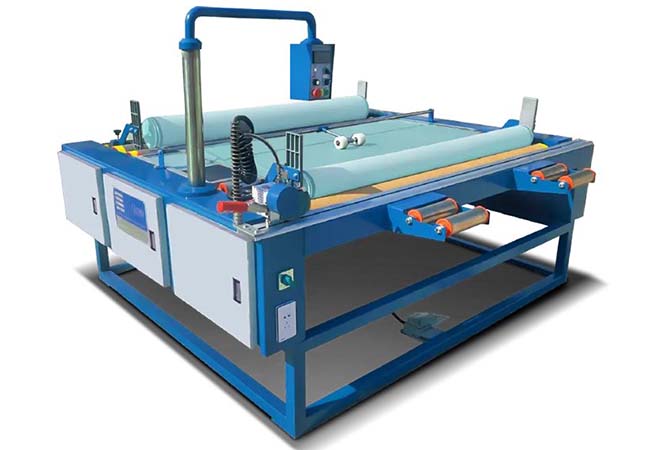Factors To Consider When Purchasing A Fabric Cutting Machine
When purchasing a fabric cutting machine, several considerations should be kept in mind. Here are some factors to take into account:

1. Fabric Compatibility: Different fabric cutters are designed to handle specific types of fabrics. If you anticipate cutting various fabric types, it's crucial to choose a cutter that can accommodate a wide range of materials effectively.
2. Thickness Capability: Consider the thickness of the fabrics you'll be working with. Some fabric cutters are suitable for thinner fabrics, while others possess the power to cut through thicker materials. Ensure your chosen cutter can handle the desired fabric thickness.
3. Cutting Size Requirements: Evaluate the size of the cuts you'll frequently need to make. Certain fabric cutters are limited to small cuts, while others offer the capability to make larger cuts. Select a cutter that aligns with your specific cutting size requirements.
4. Budget Considerations: Fabric cutters vary in price, ranging from affordable options to more expensive models. If you have budget constraints, prioritize finding a cutter that offers a balance between affordability and meeting your needs. However, if budget is not a significant concern, explore higher-priced cutters with additional features.
5. By considering fabric compatibility, thickness capability, cutting size requirements, and budget constraints, you can make an informed decision when selecting a fabric sample cutter that suits your needs and provides the desired level of functionality.
How to Operate a Fabric Cutting Machine
In the garment industry, having a dependable fabric sample cutter is paramount to achieving precise and accurate fabric samples for meeting customer expectations. Thankfully, operating a fabric sample cutter is a straightforward process. This article will guide you through the steps involved in operating a fabric sample cutter, allowing you to commence sample cutting promptly.
To begin, carefully follow the manufacturer's instructions to set up your fabric sample cutter. Once set up, position the fabric you wish to cut onto the cutting surface, ensuring the area is flat and devoid of wrinkles or creases. With the fabric appropriately positioned, lower the cutter's blade onto the fabric. Proceed meticulously, moving the blade along the designated cutting line until the entire fabric piece is cut through.
Upon completion of the cutting process, lift the blade and remove any residual fabric from the cutting surface. Repeat these steps as necessary until you have obtained all the fabric samples required.
By adhering to these simple instructions, you can efficiently operate your fabric sample cutter and swiftly produce the precise fabric samples needed in garment production.
Common Problems with Fabric Sample Cutting Machine
When using a fabric sample cutter, it's not uncommon to encounter a few common problems. Let's take a look at some of these issues:
l Fabric Tangling or Getting Stuck: This problem may arise due to factors like incorrect cutting blade tension, an improper cutting angle, or damaged cutting blades.
l Uneven Cutting: Uneven cuts can result from issues such as incorrect blade tension, an improper cutting angle, or damaged cutting blades.
l Rough Edges on Fabric Samples: Rough edges can occur if the blade tension is incorrect, the cutting angle is not right, or the cutting blades are damaged.
l Overheating and Fabric Damage: Fabric samples can be damaged if the fabric sample cutter overheats. This can happen due to incorrect blade tension, excessive cutting speed, or obstruction of the air vents.
To ensure successful cuts every time, especially when working with challenging fabrics like cotton, consider the following tips:
l Use a Sharp Knife or Rotary Cutter: A sharp blade helps prevent fraying and produces cleaner cuts.
l Cut Slowly and Deliberately: Take your time to avoid uneven cuts or accidents.
l Utilize a Cutting Board or Mat: Invest in a cutting board or mat designed specifically for fabric cutting to protect your surfaces and facilitate easier cutting.
l Test Cuts on Scrap Fabric: Always test your cuts on scrap fabric before working on your final garment piece. This ensures accuracy and helps prevent mistakes.
Conclusion
Fabric cutting machines come in various types and models, ranging from handheld devices to large industrial machines. When choosing a fabric cutting machine, consider the type of fabrics you'll be working with as a crucial factor. Different machines have specific capabilities for cutting certain fabric types. Additionally, compare factors like price, features, and brand reputation to make an informed purchase decision. By taking the time to compare options, you can select a suitable fabric cutting machine that meets your specific requirements.
Comments
Post a Comment